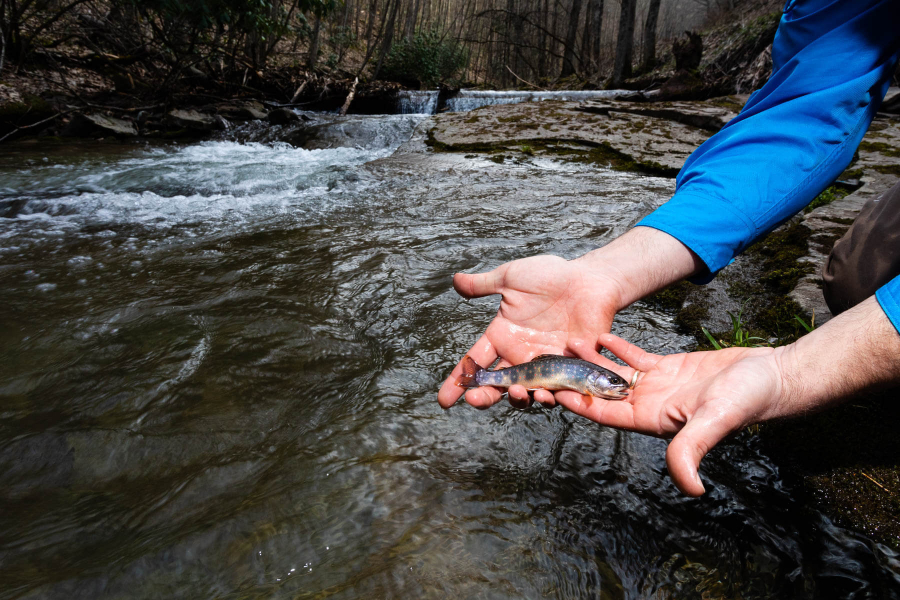Over $18 million awarded to advance restoration in the Chesapeake Bay watershed
Fifty-six projects recognized through the Chesapeake Bay Stewardship Fund

Every year, the U.S. Environmental Protection Agency (EPA) makes a pot of money available to restore critical habitat and reduce pollution from cities, farms and suburbs. The EPA works with the National Fish and Wildlife Foundation (NFWF) to select and award a series of grants to fund on-the-ground restoration, conservation and community engagement projects through the Chesapeake Bay Stewardship Fund. This year, EPA and NFWF will award over $18 million dollars to organizations across every jurisdiction in the Chesapeake Bay watershed; the largest amount in the history of the Stewardship Fund.
Just under seven million dollars will go to seven projects under the Innovative Nutrient and Sediment Reduction grant program, which supports projects that reduce nutrient and sediment pollution in the Chesapeake Bay and its tributaries. Some of these projects include:
Accelerating the Sediment Reductions through Collaborative Technical Assistance in Virginia Headwaters: Trout Unlimited will use over $900,000 to install 15 miles of exclusion fencing and establish 80 acres of new riparian forest buffers to help keep livestock out of streams and stabilize 14 miles of streambanks and repair 1.5 miles of eroding streambanks.
Planting the Trees for the Future Initiative: Howard County, Maryland is awarded just under one million dollars to plant approximately 100,000 trees across the Greater Baltimore Wilderness Coalition territory, which includes portions of Howard County, Baltimore County and Baltimore City. Planting at this rate should triple the average annual number of trees planted in this region, as well as create environmental job opportunities for central Maryland.
Forty-nine projects were awarded a total of over $11.5 million under the Small Watershed Grant program, which funds on-the-ground restoration projects that help meet the goals and outcomes of the Chesapeake Bay Watershed Agreement.
Collaborate Conservation and Brook Trout Restoration in the Cacapon Watershed: Over $350,000 was awarded to the Cacapon and Lost Rivers Land Trust to create and launch the Cacapon Watershed Collaborative to conserve high-quality riparian corridors through conservation easements and to improve brook trout habitat. The partners within the Collaborative will use behavior change research to identify effective strategies for encouraging landowners to adopt land protection and sustainable land management actions.
Enhancing Community Partnerships for the Restoration of the Anacostia River Corridor: The District of Columbia Department of Energy and the Environment is awarded $500,000 to restore 10 acres of tidal wetlands in the Anacostia River, which will restore water quality and habitat for Black duck. The abundance of Black duck serves as an indicator for watershed health and food availability, and is an outcome in the Watershed Agreement.
Leggett’s Creek Greenway Project: The Lackawanna River Conservation Association will use $50,000 to address environmental issues in the Leggett’s Creek watershed caused by past anthracite coal mining activities, and commercial and residential development. The project will mitigate erosion and sediment pollution and manage stormwater runoff by installing streambank erosion stabilization measures, as well as create a monitoring and management program to ensure the efficiency of the project long-term.
Maryland, Pennsylvania and Virginia were awarded the highest number of awards with 20, 18 and 19 respectively. Delaware received four, with the District of Columbia, New York and West Virginia receiving two each. For more information on all the awardees, please visit the full list of projects.

Comments
This is great! Regrettably, both CBF and the Alliance for Chesapeake Bay have publicized their awards as “National Fish and Wildlife Foundation Grants.” Of course NFWF is a key partner in the Stewardship grants under THEIR OWN grant from EPA. But it should be clear that Federal tax dollars appropriated to EPA by Congress provide most of the $ in these grants.
Thank you!
Your comment has been received. Before it can be published, the comment will be reviewed by our team to ensure it adheres with our rules of engagement.
Back to recent stories